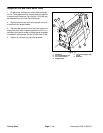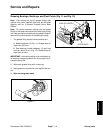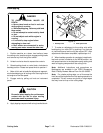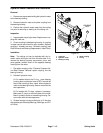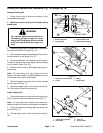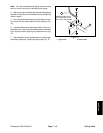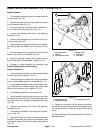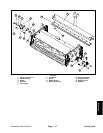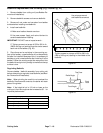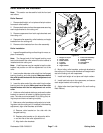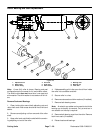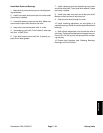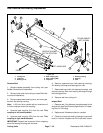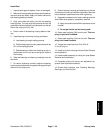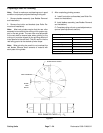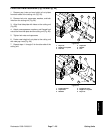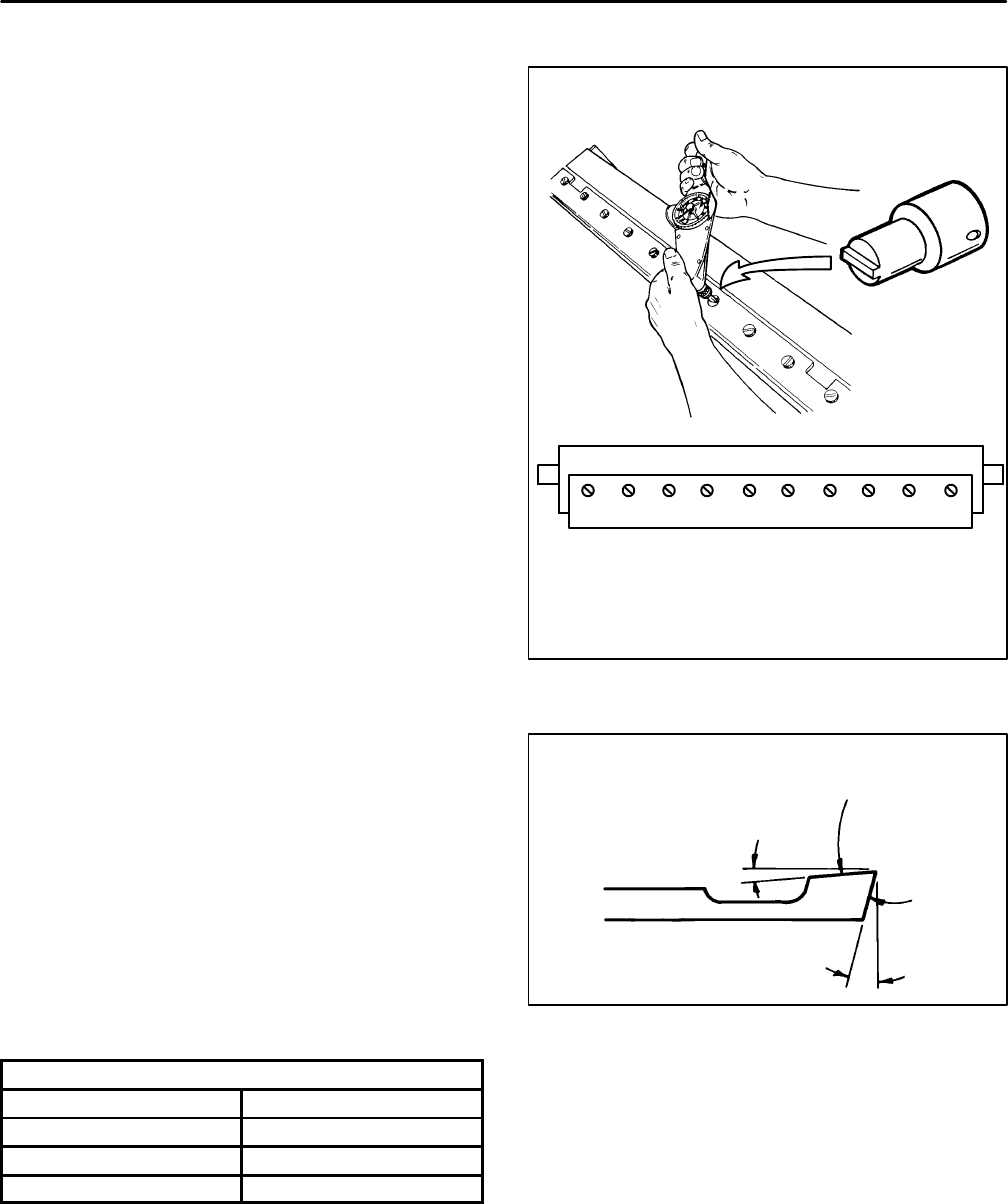
Reelmaster 2300–D/2600–DPage 7 – 18Cutting Units
Bedknife Replacement and Grinding (Fig. 22 and Fig. 23)
1. Remove bedbar from cutting unit (see Bedbar Re-
moval and Installation).
2. Remove bedknife screws and remove bedknife.
3. Remove all rust, scale and corrosion from bedbar
surface before installing new bedknife.
4. Install new bedknife:
A. Make sure bedbar threads are clean.
B. Use new screws. Apply anti–seize lubricant to
screw threads before installing.
IMPORTANT: DO NOT use an impact wrench .
C. Tighten screws to a torque of 250 to 300 in–lb
(288 to 345 kg–cm) working from the center toward
each end of the bedbar (Fig. 22).
5. Since there can be variations in the mounting sur-
face of the bedbar, a new bedknife will not be perfectly
flat after it is installed. Because of this, it is necessary to
backlap or grind a new bedknife after installing it to the
bedbar. Follow the existing angle that was ground into
the bedknife and grind only enough to make sure the top
surface is true.
Regrinding Bedknife
Remove bedbar / bedknife assembly from cutting unit
before attempting to regrind a used bedknife (see Bed-
bar Removal and Installation).
Note: When grinding, be careful to not overheat the
bedknife. Remove small amounts of material with each
pass of the grinder.
Note: If the height of cut is 1/2–inch or lower on the
cutting unit, the front angle can be increased to 30_ for
improved performance.
Bedknife Regrinding Specifications
Relief Angle
5_
Relief Angle Range
3_ to 6_
Front Angle
15_ (see Note above)
Front Angle Range
13_ to 17_
12468357
Tighten screws to a torque of 250 to 300 in–lb
(288 to 345 kg–cm) starting in the middle of the
bedknife.
Use a torque wrench
and bedknife screw tool
9 10
Figure 22
Relief Angle
Front Angle
Top Face
Front
Face
Figure 23



